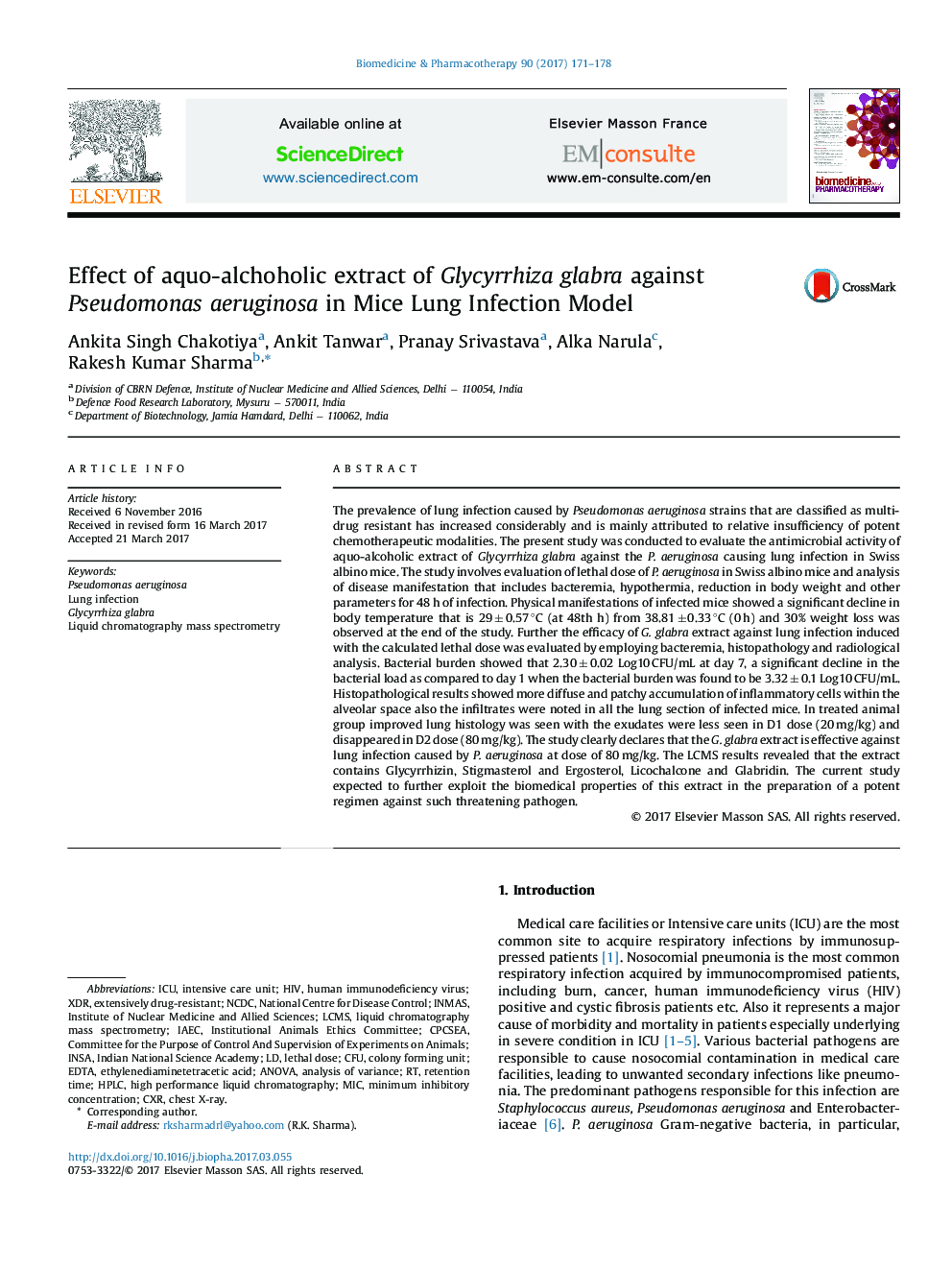| Article ID | Journal | Published Year | Pages | File Type |
|---|---|---|---|---|
| 5553032 | Biomedicine & Pharmacotherapy | 2017 | 8 Pages |
â¢08 compounds were identified in the crude extract of Glycyrrhiza glabra on the basis of LCMS analysis that includes Glycyrrhizine, Stigmasterol, Ergosterol, Licochalcone, Glabridi, 03 unidentified peaks were also obtained.â¢1 Ã 105 CFU/mL is the appropriate lethal dose of Pseudomonas aeruginosa for intra tracheal route in mice.â¢Glycyrrhiza glabra showed significant efficacy against lung infection caused by P. aeruginosa.â¢At dose 80 mg/kg the extract of G. glabra showed maximum activity against lung infection in mice.
The prevalence of lung infection caused by Pseudomonas aeruginosa strains that are classified as multi-drug resistant has increased considerably and is mainly attributed to relative insufficiency of potent chemotherapeutic modalities. The present study was conducted to evaluate the antimicrobial activity of aquo-alcoholic extract of Glycyrrhiza glabra against the P. aeruginosa causing lung infection in Swiss albino mice. The study involves evaluation of lethal dose of P. aeruginosa in Swiss albino mice and analysis of disease manifestation that includes bacteremia, hypothermia, reduction in body weight and other parameters for 48 h of infection. Physical manifestations of infected mice showed a significant decline in body temperature that is 29 ± 0.57 °C (at 48th h) from 38.81 ± 0.33 °C (0 h) and 30% weight loss was observed at the end of the study. Further the efficacy of G. glabra extract against lung infection induced with the calculated lethal dose was evaluated by employing bacteremia, histopathology and radiological analysis. Bacterial burden showed that 2.30 ± 0.02 Log10 CFU/mL at day 7, a significant decline in the bacterial load as compared to day 1 when the bacterial burden was found to be 3.32 ± 0.1 Log10 CFU/mL. Histopathological results showed more diffuse and patchy accumulation of inflammatory cells within the alveolar space also the infiltrates were noted in all the lung section of infected mice. In treated animal group improved lung histology was seen with the exudates were less seen in D1 dose (20 mg/kg) and disappeared in D2 dose (80 mg/kg). The study clearly declares that the G. glabra extract is effective against lung infection caused by P. aeruginosa at dose of 80 mg/kg. The LCMS results revealed that the extract contains Glycyrrhizin, Stigmasterol and Ergosterol, Licochalcone and Glabridin. The current study expected to further exploit the biomedical properties of this extract in the preparation of a potent regimen against such threatening pathogen.
